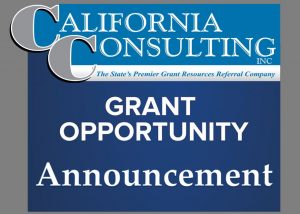
California Natural Resources Agency: Urban Greening Program (Round 4)
Deadline: July 15, 2020
Application: The California Natural Resources Agency will be accepting proposals for the Urban Greening Grant Program via the System for Online Application Review (SOAR).
Amount: 28.5 million in awards will be funded by this program. Applicants submitting the most competitive proposals will be invited to participate in the next level of the competitive process.
Eligible: city, county, special district, nonprofit organization, or an agency or entity formed pursuant to the Joint Exercise of Powers Act [Chapter 5 (commencing with Section 6500) of Division 7 of Title 1] if at least one of the parties to the joint powers agreement qualifies as an eligible applicant, notwithstanding the Joint Exercise of Powers Act.
http://resources.ca.gov/grants/urban-greening/
Summary: The Urban Greening Program is responsible for reporting to the California Air Resources Board (CARB) GHG emission reductions resulting from funded projects in accordance with the CARB approved quantification methodology and the Funding Guidelines for Agencies that administer California Climate Investments (2018). All projects are required to show a net GHG benefit and provide multiple other benefits. In order to quantify GHG emission reductions, projects must include at least one of the following project activities:
• Sequester and store carbon by planting trees
• Reduce building energy use by strategically planting trees to shade buildings
• Reduce commute vehicle miles traveled by constructing bicycle paths, bicycle lanes or pedestrian facilities that provide safe routes for travel between residences, workplaces, commercial centers, and schools.
Eligible Urban Greening Projects: Eligible urban greening projects will reduce GHG emissions and provide multiple additional benefits, including, but not limited to, a decrease in air and water pollution or a reduction in the consumption of natural resources and energy. Eligible projects will result in the conversion of an existing built environment into green space that uses natural and green infrastructure approaches to create sustainable and vibrant communities. A competitive project will maximize opportunities to reduce GHG emissions through project design and implementation as well as incorporate green infrastructure solutions that improve the sustainability and function of existing urban hardscapes and landscapes.
In addition to reducing greenhouse gas emissions, SB 859 requires all projects to achieve measurable benefits. Per statute, all projects must do at least one of the following-
• Acquire, create, enhance, or expand community parks and green spaces, and/or
• Use natural systems or systems that mimic natural systems to achieve multiple benefits.
